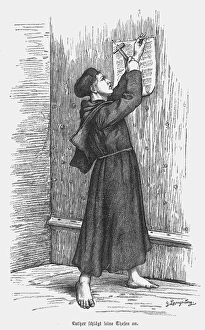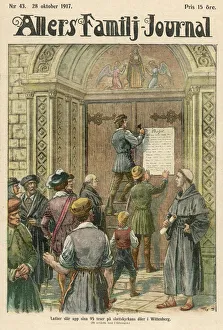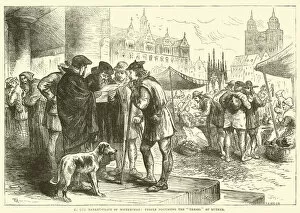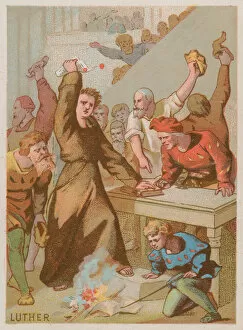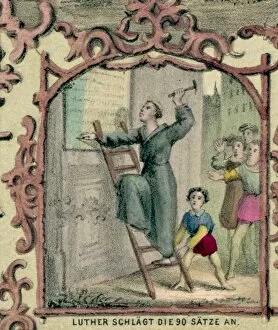Theses Collection
Martin Luther, a German reformer and Doctor of Theology, made history with his 95 Theses
All Professionally Made to Order for Quick Shipping
Martin Luther, a German reformer and Doctor of Theology, made history with his 95 Theses. These they were not just any ordinary writings; they sparked a revolution that changed the course of Christianity forever. In 1517, Luther boldly affixed his Ninety-Five Theses to the door of Wittenberg Church. This act was symbolic, as it signified his challenge to the corrupt practices of the Catholic Church. Through these theses, Luther questioned indulgences and called for a return to biblical teachings. The impact of Luther's ideas spread like wildfire throughout Europe. Engravings depict people in Wittemberg's marketplace engaged in passionate discussions about these revolutionary concepts. They were captivated by Luther's courage and determination to challenge authority. Luther himself can be seen in an engraving nailing his powerful words to the Door of Schloss-Kirk at Wittemberg. This image captures both his defiance against religious corruption and his commitment to truth. The Reformation Festival Play at Berlin immortalized this pivotal moment in black-and-white photography. It serves as a reminder that Luther's actions transcended time and place, leaving an indelible mark on history. Another engraving shows Luthers ninety-five theses displayed prominently on Wittenberg Church door - a visual representation of their significance within Protestantism today. But Martin Luther faced opposition from those who sought to suppress him. A chromolitho depicts him defiantly burning the Papal bull banning his works – an act that symbolizes resistance against oppressive forces attempting to silence him. Even Emperor William recognized Martin Luther's influence when he visited Wittenberg during a celebration dedicated solely to this remarkable man. The emperor understood that Luther had ignited something extraordinary – a movement towards religious freedom and individual interpretation of faith. Martin Luther’s study is depicted in vivid color lithography from 1882 – showcasing where he spent countless hours contemplating scripture and formulating his groundbreaking ideas.

